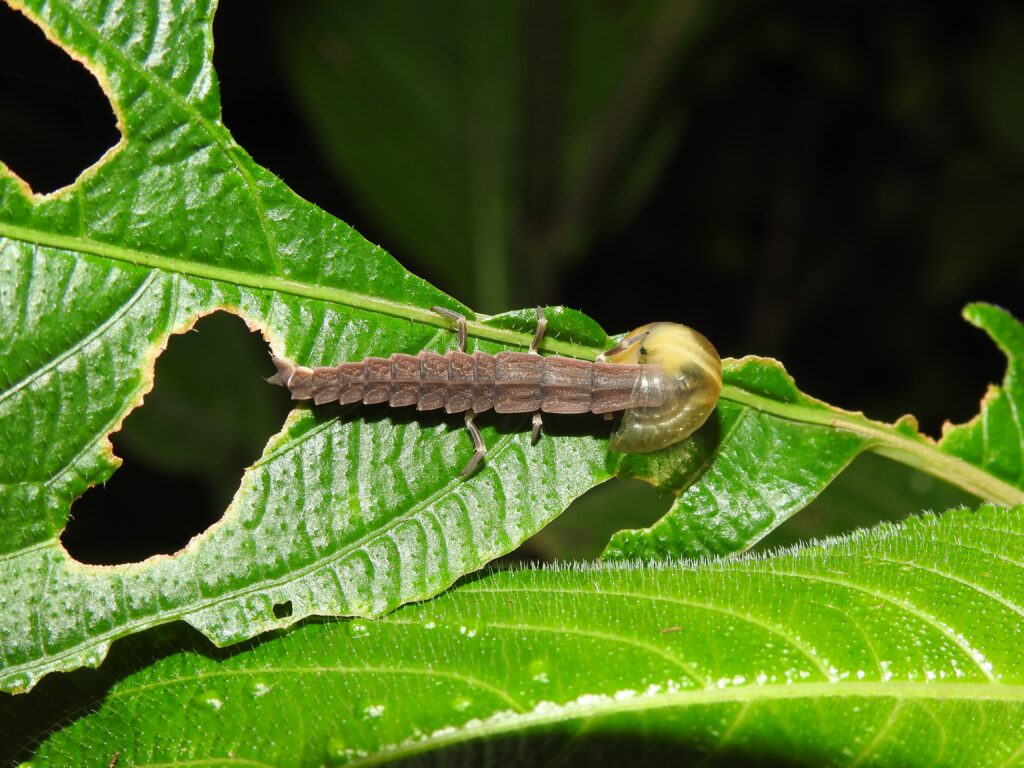Imagine a world where hunters don’t just kill their prey—they transform it into soup first. Deep in the shadows of our gardens, forests, and wetlands, an army of tiny predators operates with techniques so gruesome they’d make horror movie directors envious. These aren’t mythical creatures from science fiction; they’re the larvae living right under our noses, armed with digestive enzymes so powerful they can dissolve living tissue from the inside out. While most people think of baby insects as harmless, wiggling creatures munching on leaves, some of these youngsters have evolved into liquid-lunch specialists that would make even the most seasoned carnivore squeamish.
The Art of External Digestion
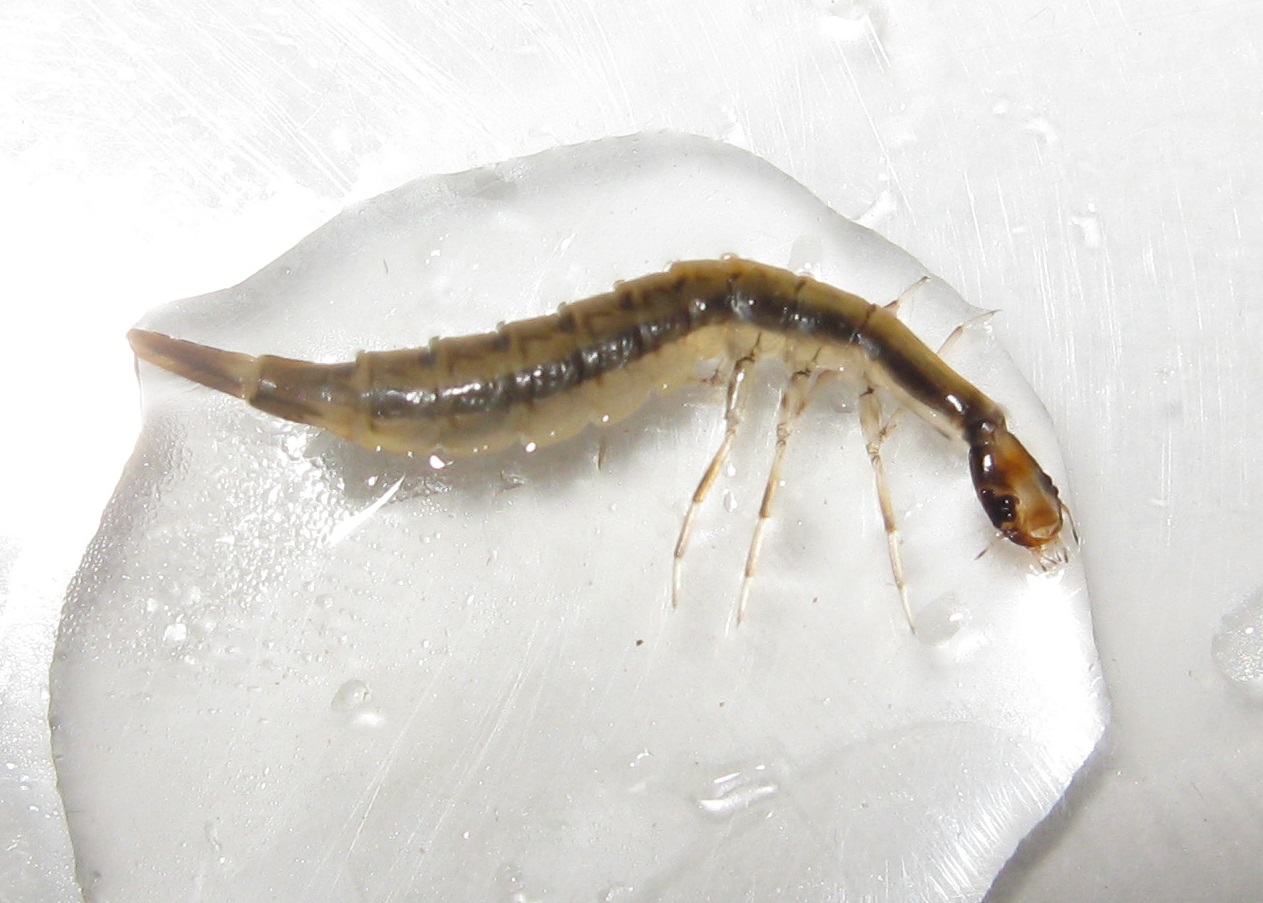
The concept of liquefying prey before consumption might sound like something from another planet, but it’s actually a sophisticated hunting strategy that has evolved millions of times across different insect families. These larvae have mastered what scientists call “external digestion”—essentially turning their victims into smoothies before taking their first sip. Unlike humans who break down food inside their stomachs, these predatory youngsters inject powerful cocktails of enzymes directly into their prey’s body cavity.
The process is both fascinating and terrifying in its efficiency. Once the enzymes are injected, they begin breaking down proteins, fats, and other cellular structures, transforming solid tissue into a nutrient-rich liquid that can be easily consumed. This method allows relatively small larvae to tackle prey much larger than themselves, since they don’t need to physically tear apart tough exoskeletons or muscle fibers.
What makes this hunting strategy even more remarkable is its precision—these enzymes are so specifically designed that they can dissolve the internal contents of their prey while leaving the outer shell intact, creating a perfect biological takeout container.
Antlion Larvae: The Original Pit Trap Engineers
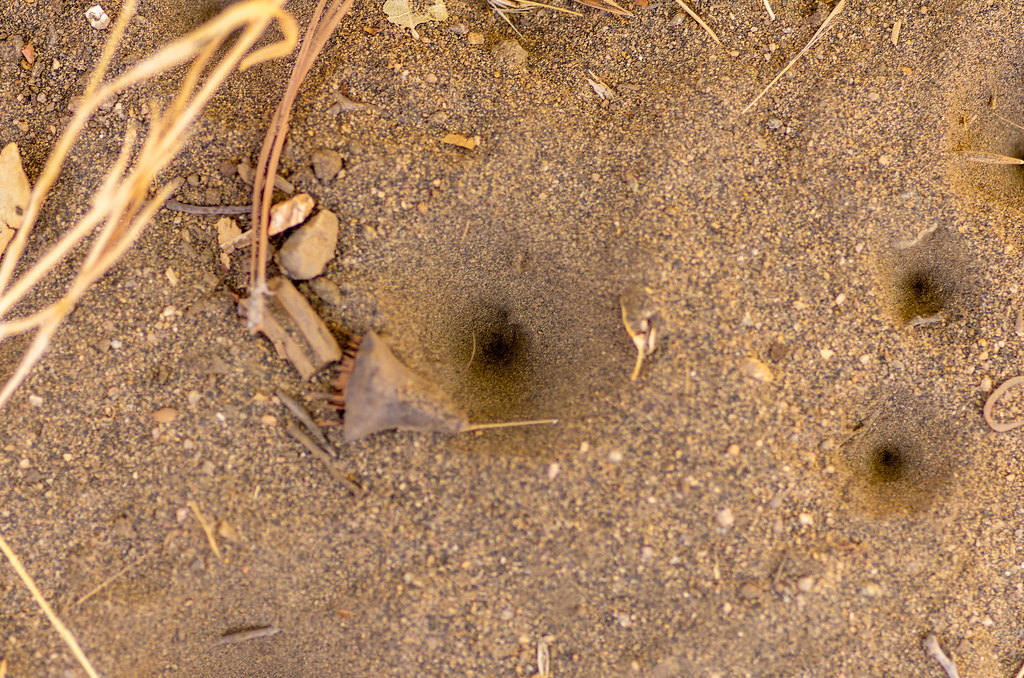
Perhaps no larva has perfected the art of liquefying prey quite like the antlion, whose youngsters are the ultimate ambush predators of the sandy world. These remarkable hunters construct elaborate funnel-shaped pits in loose sand, creating what amounts to inescapable death traps for unsuspecting ants and other small insects. When prey tumbles into these carefully engineered pitfalls, the antlion larva lurking at the bottom springs into action with lightning speed.
The antlion’s massive, curved jaws aren’t just for show—they’re hollow, functioning like hypodermic needles that inject a lethal cocktail of digestive enzymes into their victim. Within minutes, the ant’s internal organs begin dissolving, turning the once-solid insect into a protein shake ready for consumption. The larva then uses those same hollow jaws like straws, sucking up every last drop of its liquefied meal.
What’s particularly ingenious about antlions is their patience and precision. They can wait motionless at the bottom of their pits for days or even weeks, perfectly camouflaged in the sand until the perfect moment presents itself. Once they’ve finished their liquid lunch, they simply flick the empty exoskeleton out of their pit like discarding an empty juice box.
Tiger Beetle Larvae: Speed Demons of the Underground
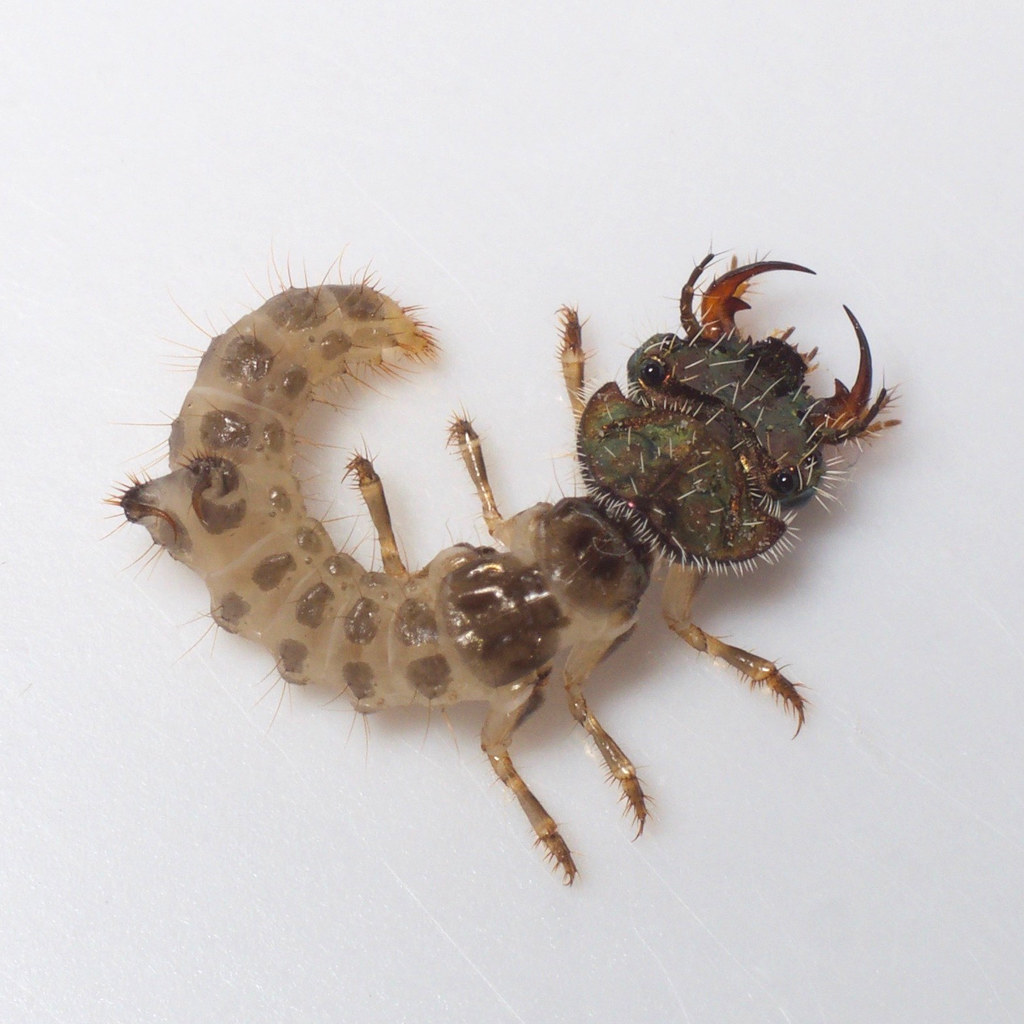
Tiger beetle larvae take a completely different approach to the liquid lunch lifestyle, operating more like high-speed underground assassins than patient pit builders. These fierce predators dig vertical burrows in hard-packed soil, positioning themselves like living bottle corks at the entrance to their tunnels. Their oversized heads and powerful jaws block the burrow opening while their keen eyes scan for movement above.
When an unsuspecting insect walks within striking distance, the tiger beetle larva explodes from its burrow with reflexes that would make a cobra jealous. Those powerful jaws clamp down on the victim, immediately injecting a paralytic enzyme cocktail that not only immobilizes the prey but begins the liquefaction process. The entire attack, from detection to injection, happens in milliseconds.
The digestive enzymes of tiger beetle larvae are particularly potent, capable of dissolving even the tough exoskeletons of beetles and other armored insects. This allows them to tackle prey items that would be impossible for other predators of similar size to handle. After the internal feast is complete, they simply retreat back into their burrows, leaving behind empty husks as testament to their deadly efficiency.
Lacewing Larvae: The Aphid Lions
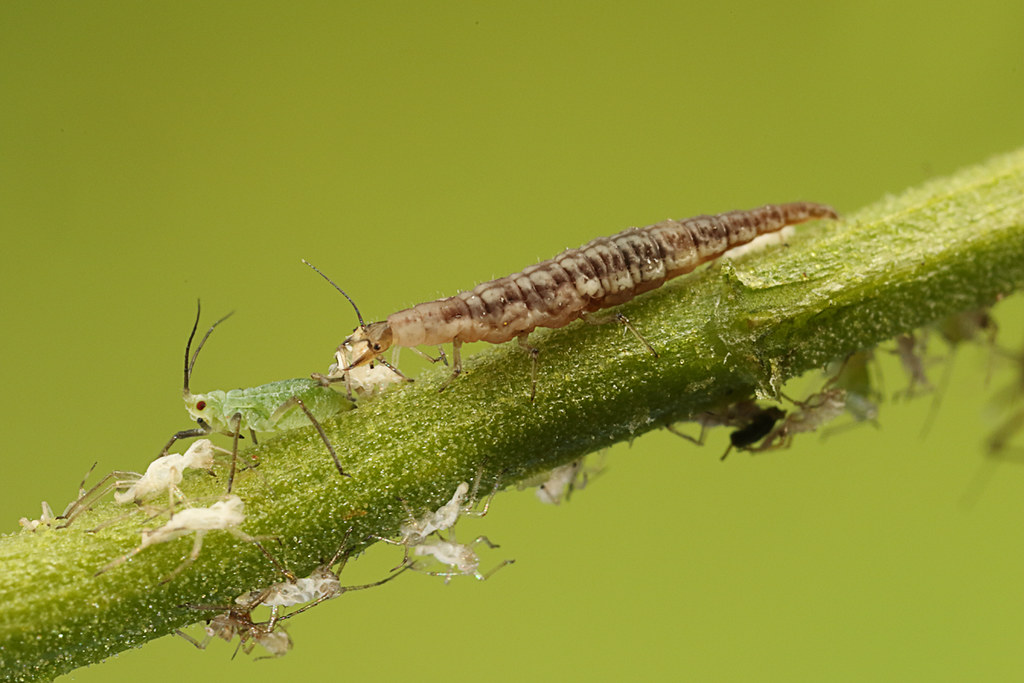
Green lacewing larvae, affectionately known as “aphid lions” by gardeners, might look like tiny alligators, but they’re actually sophisticated biological warfare specialists. These spiky, aggressive hunters patrol plant stems and leaves, searching for soft-bodied prey like aphids, thrips, and small caterpillars. Their hunting strategy combines stealth, speed, and chemical warfare in a package that’s both beautiful and terrifying.
The lacewing larva’s most distinctive feature is its pair of long, curved, hollow mandibles that work like precision syringes. When they encounter prey, these weapons pierce the victim’s body and inject a complex mixture of enzymes that begins working immediately. The cocktail includes proteases that break down proteins, lipases that dissolve fats, and paralyzing agents that prevent escape attempts.
What makes lacewing larvae particularly effective predators is their ability to completely drain their prey in just a few minutes, leaving behind perfectly preserved empty shells. A single larva can consume hundreds of aphids during its development, making them invaluable allies in natural pest control. Garden centers often sell lacewing eggs specifically to help control aphid populations, turning these liquid-lunch specialists into biological pest control agents.
Robber Fly Larvae: The Underground Interceptors
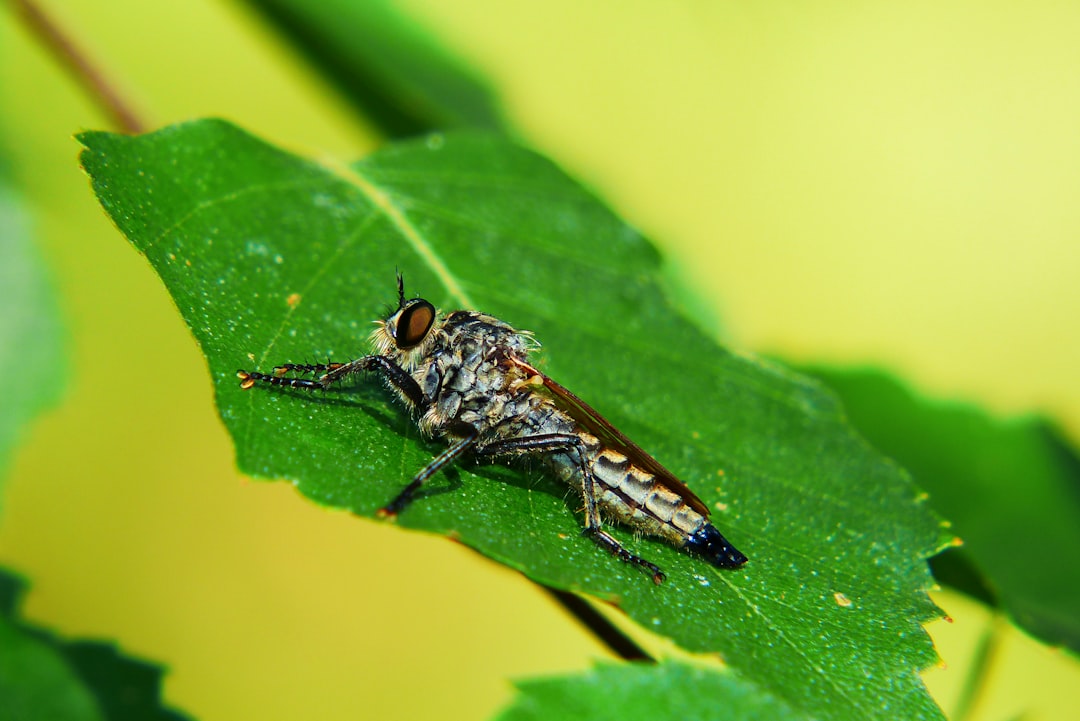
While adult robber flies are notorious aerial predators, their larvae operate in a completely different realm, hunting from underground lairs like subterranean missile systems. These soil-dwelling predators primarily target beetle larvae, fly maggots, and other soft-bodied insects that live in decaying organic matter. Their hunting strategy relies on detecting vibrations and chemical cues from potential prey moving through their territory.
Robber fly larvae possess remarkably sensitive sensory organs that can detect the slightest movement in the soil around their burrows. When prey is detected, they launch themselves with surprising speed, using their needle-sharp mouthparts to inject a paralyzing and liquefying enzyme mixture. The victim is then dragged back to the safety of their burrow for the slow process of external digestion.
The enzymes produced by robber fly larvae are particularly effective against other fly larvae, suggesting a specialized evolutionary arms race between different dipteran species. This underground warfare has been going on for millions of years, with each species developing more sophisticated chemical weapons to overcome their opponents’ defenses.
Assassin Bug Nymphs: The Masters of Injection
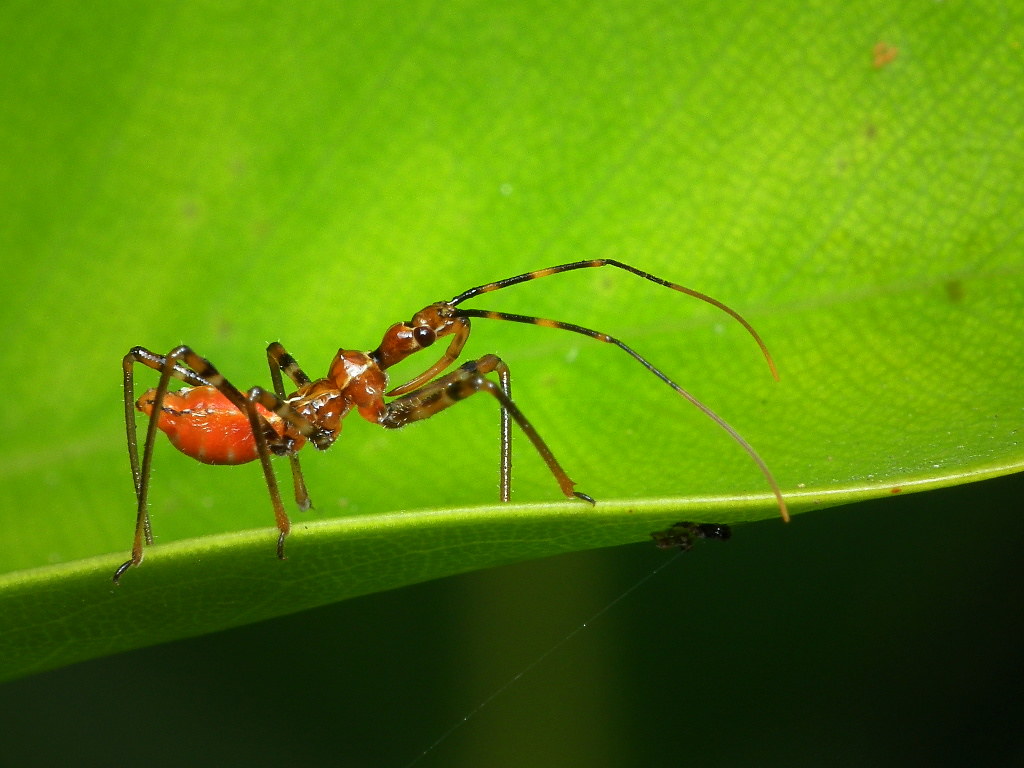
Young assassin bugs, technically nymphs rather than larvae, have elevated the art of prey liquefaction to an almost surgical level of precision. These remarkable predators possess a needle-like rostrum (elongated mouthpart) that functions as both a syringe and a straw, allowing them to inject enzymes and extract liquefied nutrients with remarkable efficiency. Unlike many other liquid-feeding predators, assassin bug nymphs actively hunt rather than wait in ambush.
The hunting behavior of assassin bug nymphs is nothing short of spectacular, combining stealth, patience, and lightning-fast strikes. They slowly stalk their prey, often taking several minutes to position themselves for the perfect attack angle. Once in position, the rostrum penetrates the victim’s exoskeleton with surgical precision, delivering a cocktail of enzymes that begins working within seconds.
What sets assassin bugs apart from other liquid feeders is the complexity of their enzyme mixture, which includes not only digestive compounds but also anticoagulants to prevent blood clotting and anesthetics to minimize the prey’s struggle. This sophisticated chemical arsenal allows them to feed on a wide variety of prey species, from soft caterpillars to hard-shelled beetles, making them incredibly versatile predators in any ecosystem they inhabit.
Diving Beetle Larvae: Aquatic Liquidators
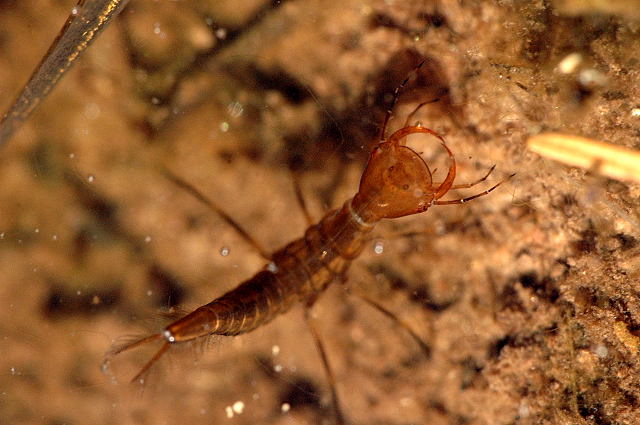
The underwater world hosts some of the most voracious liquid-feeding predators on Earth, and diving beetle larvae rank among the most fearsome. These aquatic hunters, sometimes called “water tigers,” patrol ponds, streams, and wetlands with the single-minded determination of marine torpedoes. Their massive, sickle-shaped mandibles are perfectly designed for underwater combat, functioning as both grappling hooks and injection systems.
Diving beetle larvae are ambush predators that rely on exceptional camouflage and lightning-fast reflexes to capture prey. They often bury themselves in sediment or hide among aquatic vegetation, with only their keen eyes and sensitive antennae exposed. When fish fry, tadpoles, or aquatic insects venture too close, the larva strikes with explosive force.
The digestive enzymes of diving beetle larvae are specially adapted for the aquatic environment, remaining stable and effective even when diluted by water. This adaptation allows them to successfully liquefy prey underwater without losing potency, a remarkable biochemical achievement. Their ability to consume prey much larger than themselves makes them apex predators in their aquatic microcosm, capable of taking down creatures several times their own size.
Dragonfly Nymphs: The Jet-Propelled Hunters

Dragonfly nymphs represent the pinnacle of aquatic predatory evolution, combining high-speed propulsion with devastating prey-liquefying abilities. These remarkable hunters possess a unique extendable lower jaw called a labium, which shoots out like a biological harpoon to snare unsuspecting prey. Once captured, the victim is drawn back to the nymph’s powerful mandibles, where the liquefaction process begins immediately.
The hunting strategy of dragonfly nymphs is both patient and explosive, much like their aerial adult forms. They can remain motionless for hours, perfectly camouflaged among aquatic plants or debris, before launching their labium with ballistic precision. The strike happens so quickly that high-speed cameras are needed to capture the full sequence of events.
What makes dragonfly nymphs particularly formidable is their combination of mobility and firepower. They can propel themselves through water using jet propulsion, forcing water out of their rectal chambers to achieve rapid acceleration. This allows them to chase down fast-moving prey or quickly escape from threats while maintaining their role as liquid-lunch specialists. Their enzyme cocktails are potent enough to dissolve fish scales and tough arthropod exoskeletons, making virtually no aquatic creature safe from their predation.
Ground Beetle Larvae: The Soil Assassins
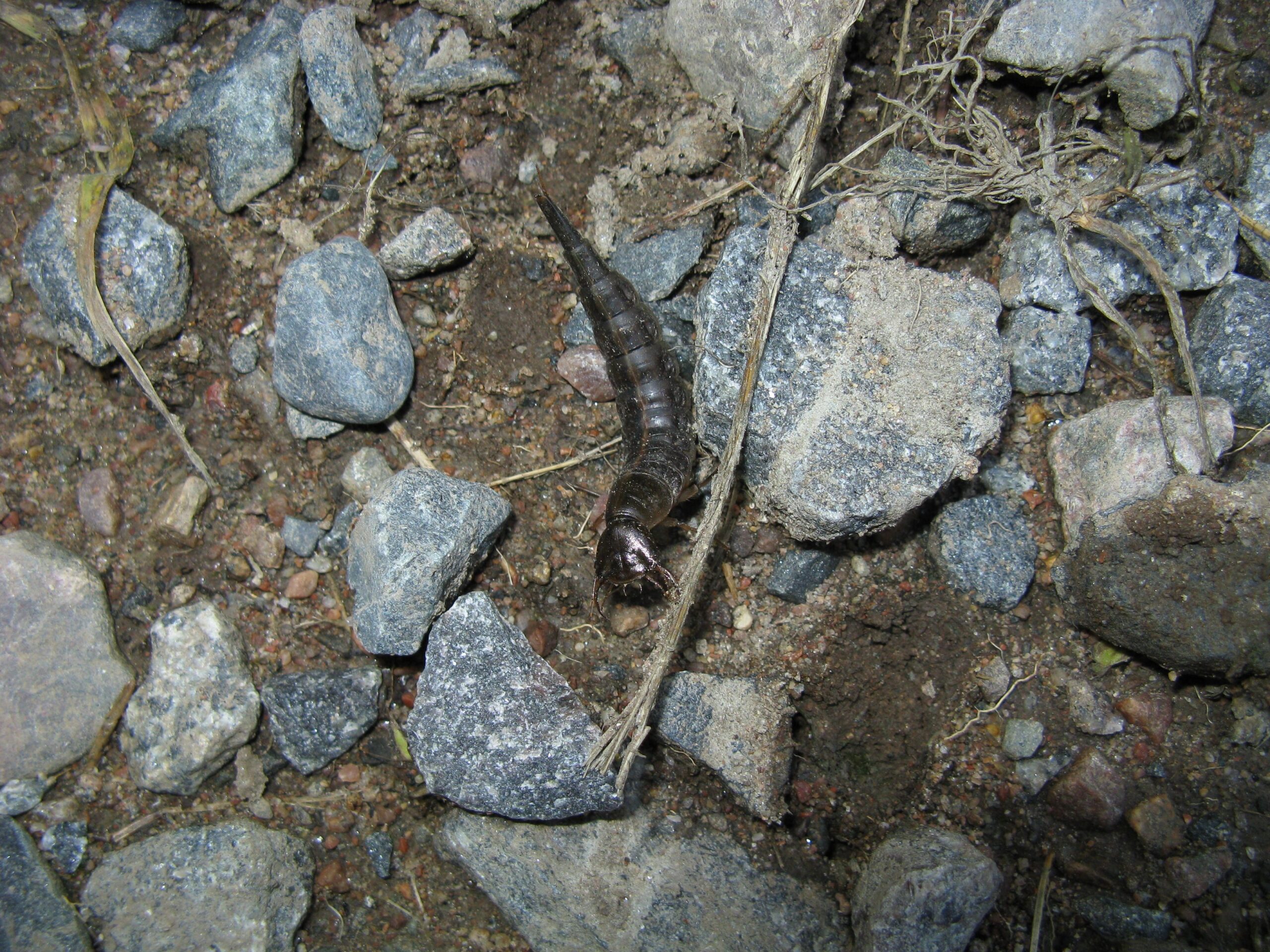
Ground beetle larvae operate as specialized underground hunters, patrolling the dark world beneath our feet with deadly efficiency. These elongated predators have evolved specific adaptations for life in soil and leaf litter, including powerful digging legs and chemically-enhanced sensory systems that can detect prey through soil particles. Their hunting strategy relies heavily on chemical detection rather than visual cues, making them incredibly effective night hunters.
The mandibles of ground beetle larvae are often disproportionately large compared to their body size, reflecting their role as primary weapons in prey capture and liquefaction. These jaws can easily penetrate the exoskeletons of earthworms, fly larvae, and other soil-dwelling insects. The injection of digestive enzymes happens almost instantaneously upon prey capture, ensuring that victims cannot escape once caught.
Different species of ground beetle larvae have specialized in hunting specific types of prey, leading to remarkable diversity in their enzyme cocktails. Some species specifically target earthworms and possess enzymes designed to break down the unique proteins found in annelid tissue. Others focus on fly maggots, beetle grubs, or root-feeding insects, each requiring different biochemical approaches to successful liquefaction.
Firefly Larvae: Glowing Liquid Hunters
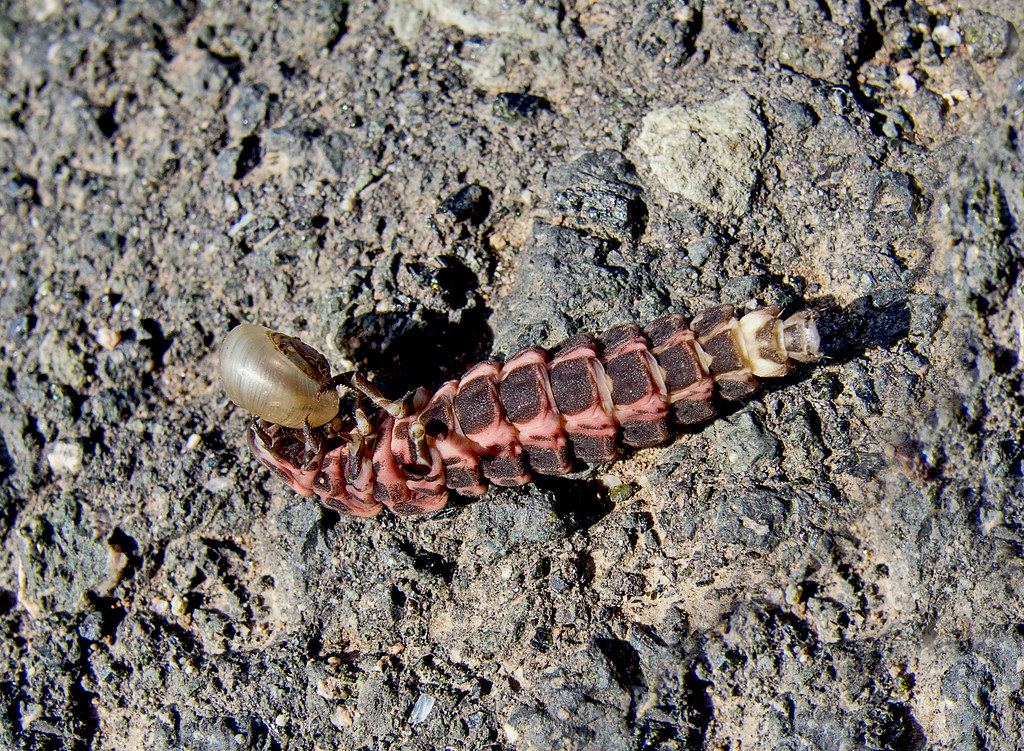
The gentle, romantic glow of adult fireflies belies the savage nature of their larval stage, which ranks among the most efficient liquid-feeding predators in the insect world. Firefly larvae, sometimes called “glowworms,” are specialized hunters of snails, slugs, and earthworms—prey items that present unique challenges due to their slime production and muscular bodies. These glowing predators have evolved remarkable strategies to overcome these defensive mechanisms.
When hunting snails, firefly larvae employ a persistence strategy that can last for hours or even days. They inject paralytic enzymes through the snail’s soft tissues, gradually overcoming the mollusk’s ability to retreat into its shell. The liquefaction process for snails is particularly complex, as the enzymes must break down both muscle tissue and the mucus that snails use for protection and locomotion.
The bioluminescence of firefly larvae serves multiple purposes beyond simple beauty—it may warn potential predators of their toxic nature while also serving as a hunting aid in low-light conditions. Their enzyme cocktails contain unique compounds not found in other liquid-feeding predators, specifically adapted to deal with the alkaline pH of snail and slug tissues. This biochemical specialization has made them incredibly successful in their ecological niche, with some species capable of consuming dozens of snails during their larval development.
Neuroptera Larvae: The Diverse Liquidators
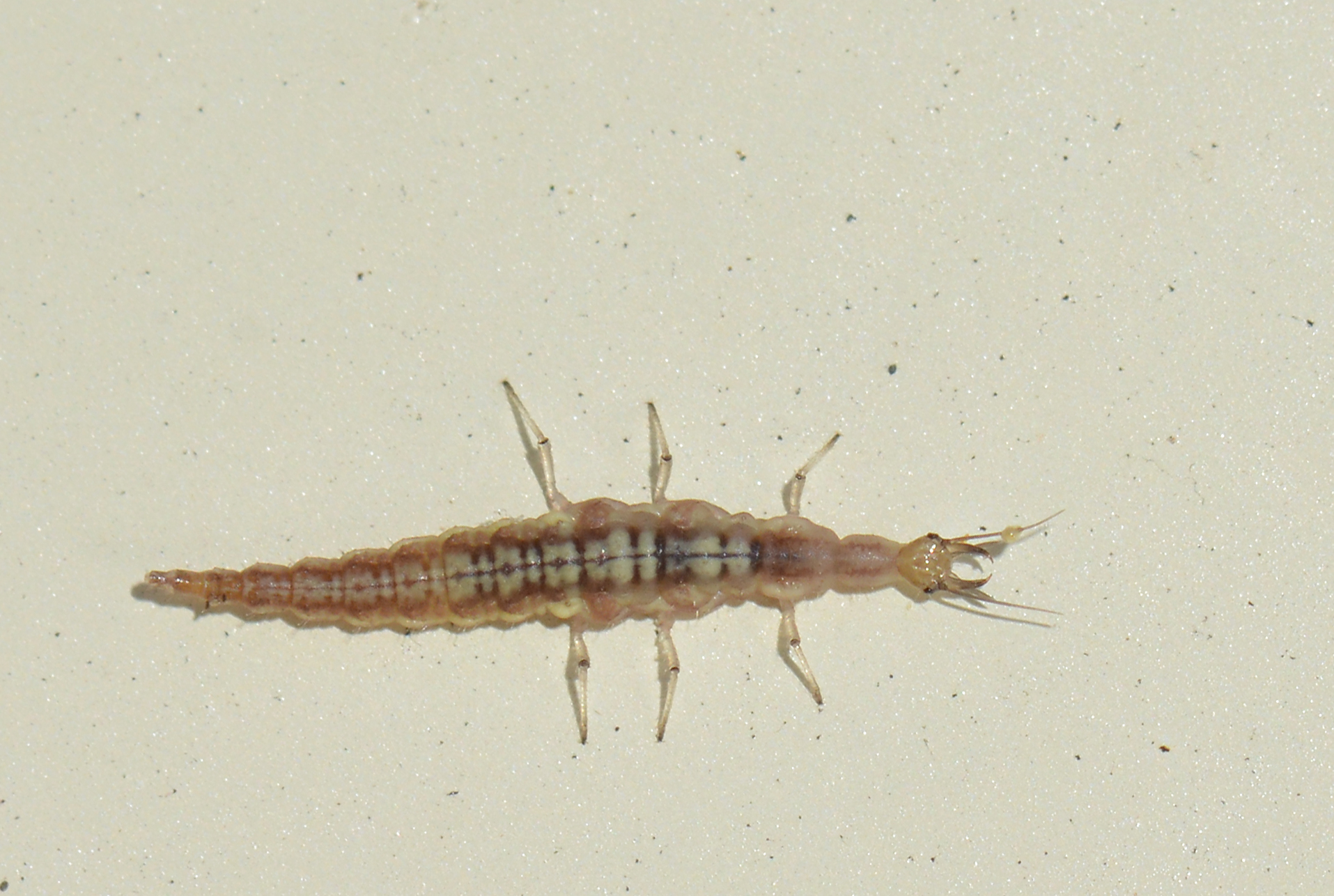
The order Neuroptera encompasses a remarkable diversity of liquid-feeding larvae, each with unique adaptations for their predatory lifestyle. Beyond the well-known lacewing and antlion larvae, this group includes owlfly larvae, mantidfly larvae, and several other lesser-known species that have perfected the art of external digestion. What unites all neuropteran larvae is their possession of hollow, sickle-shaped mandibles that function as sophisticated injection and suction systems.
Owlfly larvae, close relatives of antlions, have abandoned the pit-building lifestyle in favor of active hunting on tree bark and vegetation. Their enzyme cocktails are specially formulated to work quickly, as their exposed hunting grounds leave little time for lengthy feeding sessions. These larvae must capture, liquefy, and consume their prey within minutes to avoid detection by birds and other visual predators.
Mantidfly larvae represent perhaps the most unusual neuropteran hunting strategy, with some species acting as parasitoids that infiltrate spider egg sacs. Once inside, they systematically liquefy and consume developing spider eggs, using specialized enzymes that can penetrate the tough chorion (egg shell) of their arachnid hosts. This intimate relationship between predator and prey has led to some of the most specialized enzyme systems found in any liquid-feeding insect.
The Chemistry of Liquefaction
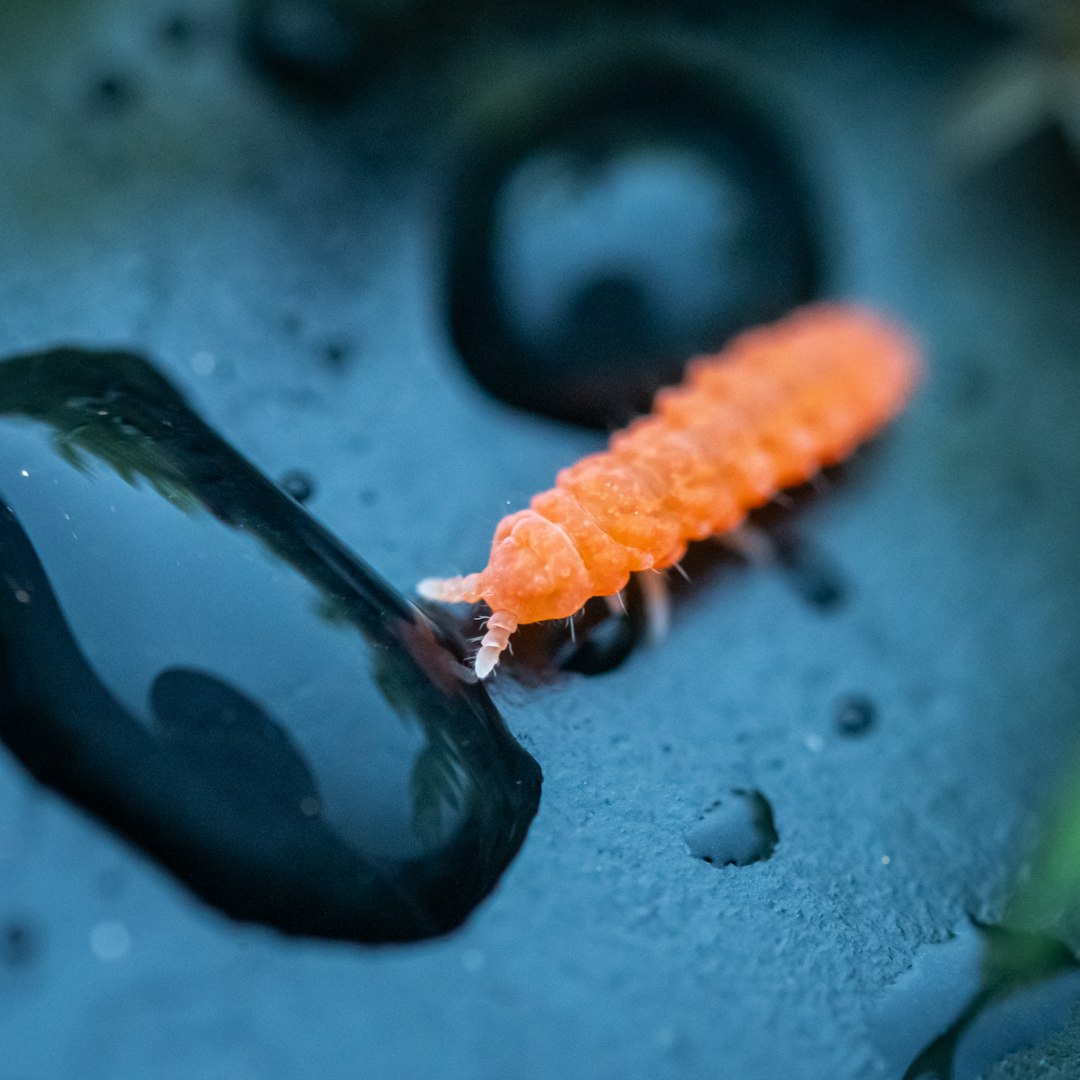
The biochemical arsenal employed by liquid-feeding larvae represents millions of years of evolutionary refinement, resulting in enzyme cocktails that rival the most sophisticated pharmaceutical compounds. These biological weapons typically contain multiple classes of enzymes working in concert: proteases that break down proteins, lipases that dissolve fats, chitinases that attack exoskeletons, and hyaluronidases that break down connective tissues. The precise combination varies between species, reflecting their specific prey preferences and hunting strategies.
Recent research has revealed that many of these enzyme cocktails also contain antimicrobial compounds that prevent bacterial contamination of the liquefied prey. This is crucial for species that feed slowly or store partially digested prey, as bacterial growth could spoil their meal or cause infection. Some larvae even produce their own antibiotics, essentially sterilizing their food source during the liquefaction process.
The delivery systems for these enzymes are equally sophisticated, with hollow mandibles featuring multiple channels that allow for precise control of enzyme injection and nutrient extraction. Some species can even selectively inject different enzyme mixtures depending on the type of prey encountered, demonstrating a level of biochemical sophistication that continues to amaze researchers. The study of these natural enzyme systems has led to advances in biotechnology, medicine, and industrial processing, proving that nature’s predators are also valuable teachers.
Evolutionary Advantages of Liquid Feeding

The evolution of prey liquefaction has provided these larvae with numerous advantages that explain why this feeding strategy has appeared independently across multiple insect orders. Perhaps most importantly, external digestion allows small predators to consume prey much larger than themselves, dramatically expanding their potential food sources. A tiny antlion larva can successfully hunt and consume beetles several times its own size, something that would be impossible with conventional chewing mouthparts.
Energy efficiency represents another major advantage of liquid feeding, as the process of external digestion requires far less energy than physically breaking down tough exoskeletons and fibrous tissues. The larvae can remain relatively motionless during feeding, conserving energy while still extracting maximum nutrition from their prey. This efficiency is particularly important for ambush predators that may wait weeks between meals.
The liquid feeding strategy also provides protection from prey that might otherwise fight back or escape. Once the paralyzing enzymes take effect, even large, powerful insects become helpless, unable to use their own weapons or defensive mechanisms. This has allowed liquid-feeding larvae to specialize in hunting dangerous prey like wasps, bees, and other well-armed insects that conventional predators might avoid. The evolutionary success of this strategy is evident in its persistence across hundreds of millions of years and its independent evolution in numerous insect lineages.
Ecological Impact and Importance
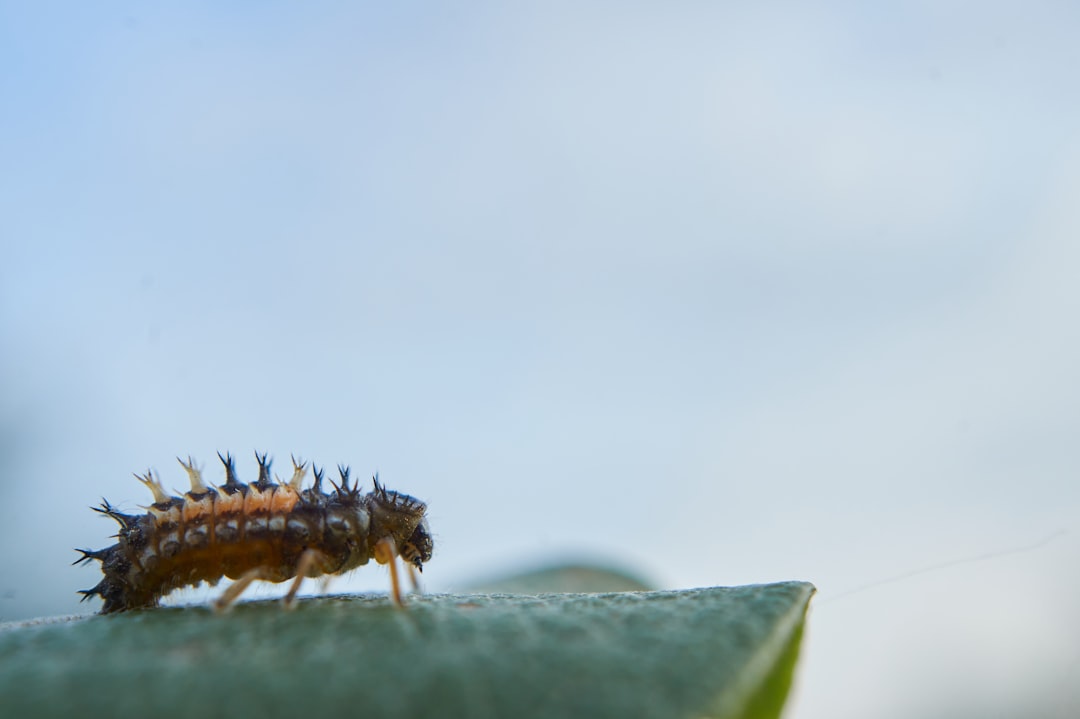
Liquid-feeding larvae play crucial roles in maintaining ecological balance, serving as both predators and prey in complex food webs. Their predatory activities help control populations of pest insects, making them valuable allies in natural pest management systems. Gardeners and farmers have long recognized the benefits of encouraging lacewing larvae, ground beetle larvae, and other liquid feeders as biological control agents that reduce the need for chemical pesticides.
The feeding activities of these larvae also contribute to nutrient cycling in ecosystems, as they break down organic matter and make nutrients available to other organisms. Their role as decomposers is often overlooked, but many species help process dead and dying insects, accelerating the return of nutrients to soil and plant systems. This decomposer function is particularly important in forest floor and soil ecosystems where they process vast quantities of arthropod remains.
From a biodiversity perspective, liquid-feeding larvae represent some of the most specialized predators on Earth, occupying ecological niches that would otherwise remain unexploited. Their presence indicates healthy ecosystem function, as these predators require stable prey populations and undisturbed habitats to complete their complex life cycles. Conservation efforts that protect these remarkable hunters ultimately benefit entire ecological communities by maintaining the predator-prey relationships that keep ecosystems in balance.
Conclusion
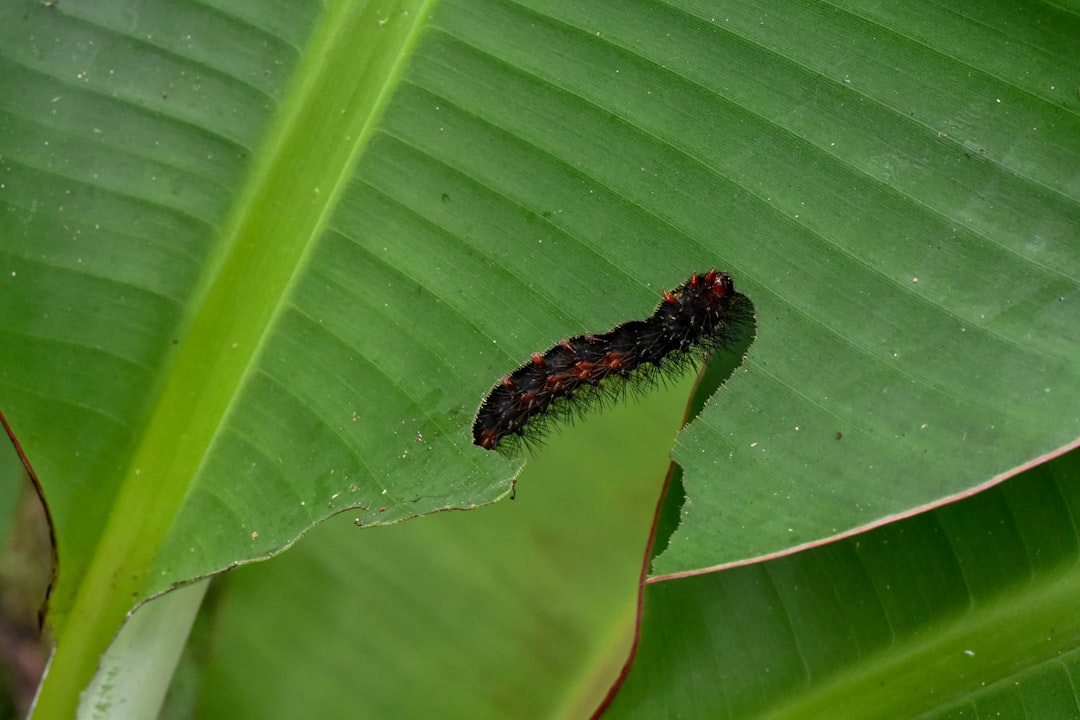
The world of liquid-feeding larvae reveals nature’s incredible capacity for innovation, showcasing predatory strategies that combine biochemical sophistication with behavioral complexity. These remarkable hunters have transformed the simple act of eating into an art form, developing enzyme cocktails more complex than any human-designed pharmaceutical and delivery systems more precise than modern medical equipment. From the patient antlions in their sandy amphitheaters to the lightning-fast tiger beetles in their underground bunkers, each species has perfected its own approach to the liquid lunch lifestyle.
Understanding these predators offers us valuable insights into evolution, biochemistry, and ecological relationships while challenging our preconceptions about the insect world. Their contributions to pest control, nutrient cycling, and biodiversity maintenance make them invaluable components of healthy ecosystems. As we face growing environmental challenges, perhaps we should look more closely at these tiny liquid specialists—they might just hold keys to sustainable solutions we haven’t yet imagined.
The next time you walk through a garden or natural area, remember that beneath your feet and all around you, an invisible army of liquid-lunch artists is hard at work, maintaining the delicate balance that keeps our world functioning. What other secrets might these miniature predators be hiding in their chemical arsenals?

